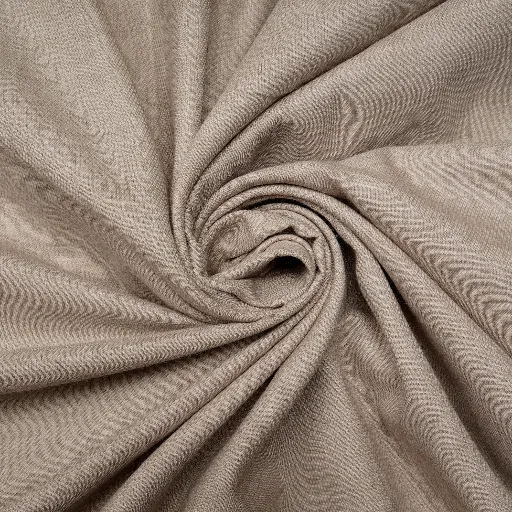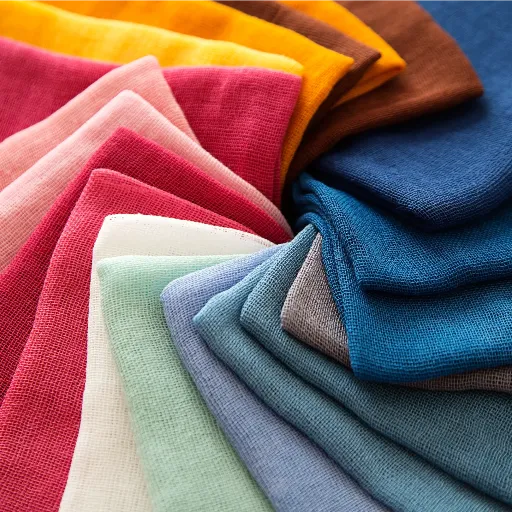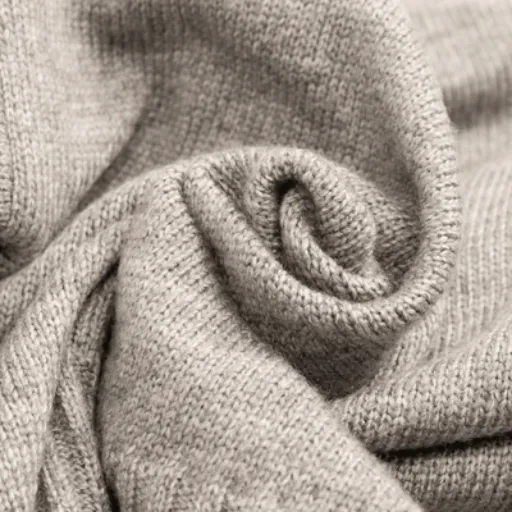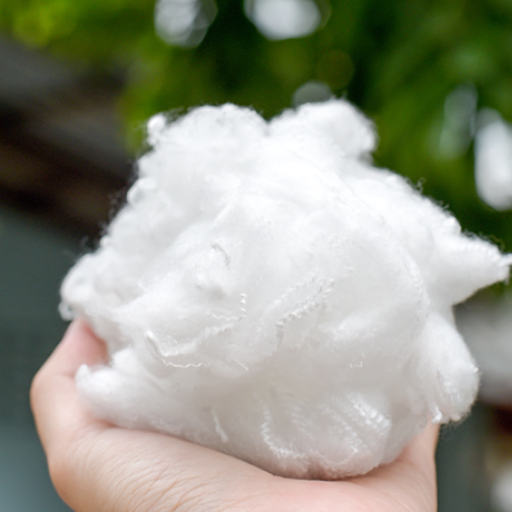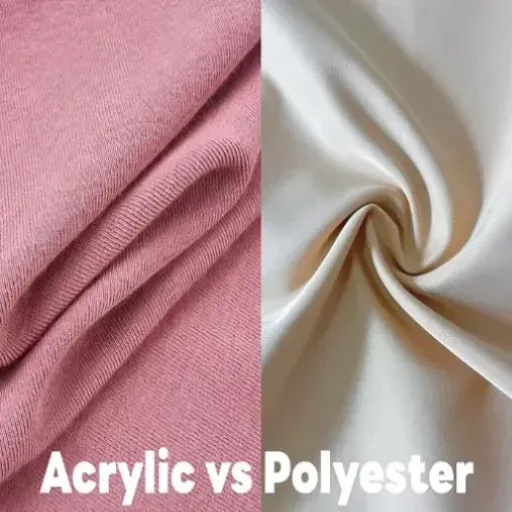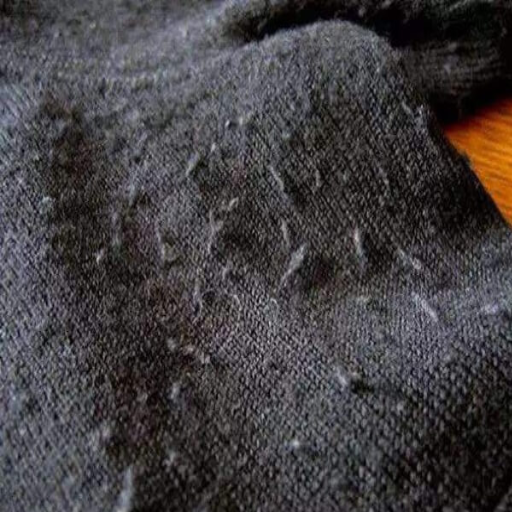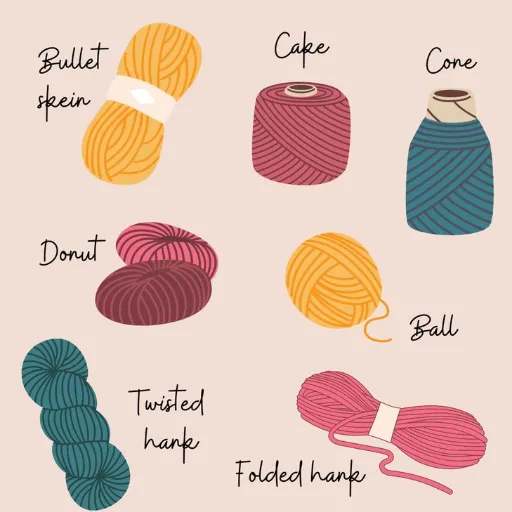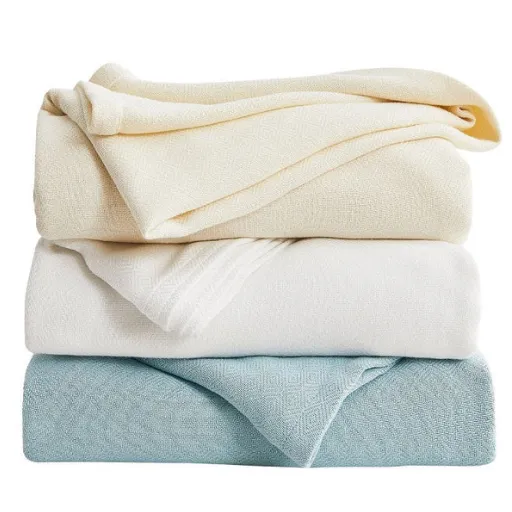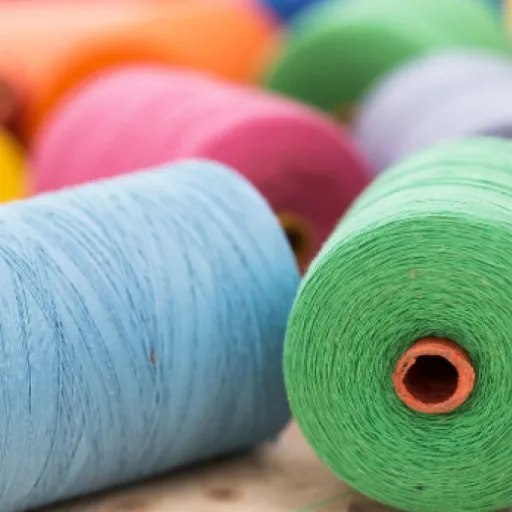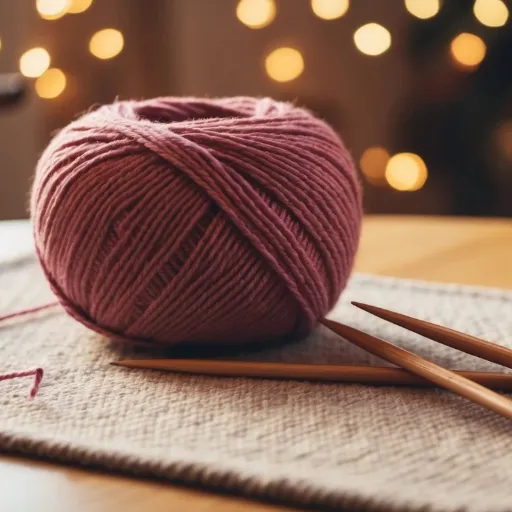Choosing the right yarn can make any sort of crafting project-and crochet, of course, is one of them-a hit or a miss. Being one of the two most common types, acrylic and wool are two great options with their own unique properties setting them apart and making them more suitable from one end of the spectrum to the other. But how do you choose? This guide explores all there is to know about acrylic and wool yarns, touching upon and contrasting their uses, strengths, and best scenarios in crocheting or knitting. By the end of this read, it will be clear on the times and reasons for picking one over the other so that your next project is equally commercial and elegant.
Introduction to Acrylic and Wool Yarn
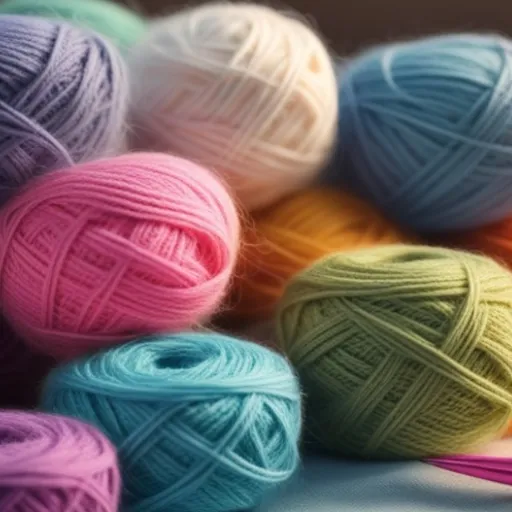
Understanding Yarn Types: Acrylic vs Wool
Acrylic Yarn:
Acrylic yarn is a synthetic fiber made of polymer materials and designed to imitate the qualities of natural fibers, such as wool. It is lightweight, durable, and usually cheaper than natural yarns. The biggest advantage is that it is very versatile: it can be used for practically any project, from blankets to clothing. Sometimes, an advantage is that it repels several pests or mildew, and therefore could be a great choice if one needs yarn for long storage.
Also, acrylic yarn is easy to care for, as most types can be machine-washed and dried with no worries. It can come in every color imaginable and has multiple textures from which to select to customize any project. Some drawbacks to acrylic include less breathability and the feeling of softness that tends to gain from a woolen form; these two can make a project slightly less luxurious or warm in its feel.
Wool Yarn:
Wool yarn, being a natural fiber, is produced from the fleece of sheep. It is most famous for the warmth and softness that it provides, along with a very high elasticity. Hence, wool yarn is traditionally employed for winter garments and accessories. Wool yarn is highly breathable and moisture-wicking; because of this, in cold conditions, they keep the wearer warm while cooling them down in a warmer environment.
Being highly absorbent, though, wool requires special care, more often than not necessitating hand washing or gentle cycle washes. Wool is also a very durable fiber, retaining its shape through the years. It is also biodegradable and eco-friendly, providing an excellent option for someone attempting to go green. The downside is that it may cost more and depending on the variety, it may irritate sensitive skin or for people with wool allergies.
Importance of Choosing the Right Yarn for Your Project
In a nutshell, selecting the correct yarn for your project is something of paramount importance if you wish to have the desired effect on your finished project. Yarn choice gives texture, durability, stretch, and comforts in project application. Choosing any lesser yarn might hamper you during crafting or yield a product that could weigh heavily on your expectations.
The fiber content of the yarn will point to its suitability to your project. Natural fibers like cotton or wool will be an excellent choice for items that are breathable, warm, and good for the green cause, while synthetics such as acrylic will be more lightweight, put to multiple uses, and often cheaper. Also, the weight of the yarn-from lace or superfine to bulky-shall determine the thickness and drape you want for your design. Whenever there are instructions to follow, then follow them; they are there for a reason and specific yarns are considered when writing patterns.
Also, see to it that your yarn works well with your skill level and the tools you’ll be using. Some yarns can be a bit of a challenge for novices-if they are tricky textured or very fine-while others are easy and do not punish you for a few slip-ups. One way to affirm the yarn is suitable for your project is attempting a gauge swatch; you can alter it early on and will have a more rewarding crafting experience.
Overview of Yarn Characteristics and Applications
The different types of yarns available in the market are intended to serve diverse crafting purposes. The more familiar yarn characteristics include fiber content, weight, texture, and color. Fiber content is basically the content of the fiber of which the yarn is made: wool, cotton, acrylic, or a blend. Each fiber imparts certain properties to the yarn; for instance, wool is warm and elastic, while cotton is light and breathable. Yarn weight ranges from lace to super bulky and heightens the perception of thickness or thinness and suffices the needs of a particular project. Thicker yarns work well for any fast project, such as a blanket, while finer yarns work wonders for intricate designs, such as lacework.
On the yarn texture hugely affects the final look and feel of a project. Smoother yarns will give clean, crisp stitches that are more suitable for intricate patterns, while novelty or textured yarns give more interest and depth, so the stitches should remain simple to complement their own visual effect. Colors of the yarn also contribute to increasing the beauty of your creations. Solid colors highlight stitch pattern, whereas variegated or self-striping colors allow the colors to do magic of their own with simple stitch design.
The selection of yarn can determine what your projects ultimately turn into. Considering varied considerations should go into it: functionality, appearance, skill level, and need of the project. The finest yarns for garments or accessories are soft, elastic, and durable. Washing of blankets or home decoration items, on the other hand, could put the primary focus on yarn dyes and textures. Relating yarn characteristics to your needs keeps a project and its principles as a must-have on the craft list.
Comparing Acrylic and Wool Yarn
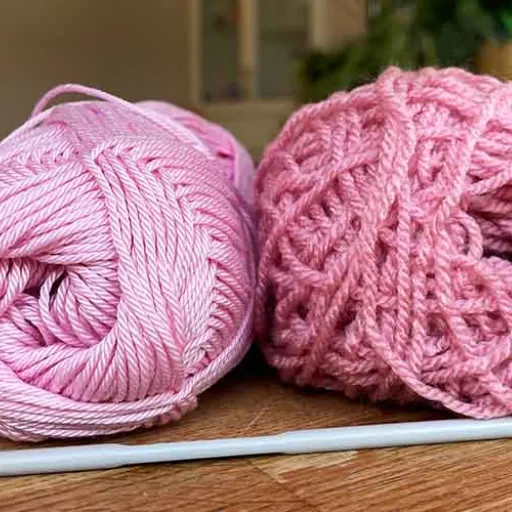
Cost Analysis: Acrylic vs Wool
| Yarn Type | Cost Factor | Key Points |
|---|---|---|
| Acrylic | Affordable | Budget-friendly, available in bulk, mass-produced |
| Wool | Higher Price | Natural fiber, labor-intensive processing, premium varieties |
Typically affordable, acrylic yarn is of choice for any crafter who thinks in terms of budget or for any major project. Manufactured from synthetic fibers, acrylic is produced in such large quantities and so cheaply that it remains competitively priced. Furthermore, acrylic yarns very often come in economic-bulk options, cementing its status in front of those looking for an inexpensive solution.
Wool yarn, on the other hand, is usually priced on the higher scale due to the natural and heavy processes involved in obtaining and preparing the fibers. With sheep providing their wool, the processes of shearing, cleaning, and spinning add to the cost of producing. Rougher wool varieties such as merino or alpaca raise this cost even more, with the salesman positioning it as an investment for the crafter who looks for quality and luxury.
The final difference in the costing between acrylic and wool boils down to its purpose and priorities. Use acrylic for anything requiring cheap and easy-care stuff and wool for those appreciating natural fibers, heat, and durability at a higher price. Budget and use should influence your choice between these two yarn categories.
Durability and Longevity of Wool and Acrylic
Wool is truly recognized for durability and longevity. Its natural elasticity enables the fibres to spring back into shape, never succumbing to the stresses that normally come with repeated use. Wool clothes, therefore, can retain their shape and purpose for a number of years, especially if treated well. Thus, they are perfect for things that need to really last-woolly sweaters, overcoats, and winter accessories. The fibers’ strength also means they’d not pill as a resounding answer to keep their glamorous appearance through any amount of wearing.
Acrylic yarn is, in comparison, less durable than wool but has sufficient longevity for many applications. With the loss of inherent elastic properties that are always present in the fibers of wool, acrylics behave differently and, in fact, the alterations in shape or sometimes premature wear sets in quite fast with frequent washing or heavy use in day-to-day applications. But an acrylic fiber is resistant to moth damage, fading, and staining, which has some advantages, at least for utilitarian products: blankets and the like. These go into a very light type of wear provided for projects and things.
As an ultimate determining factor between wool or acrylic in terms of durability, it depends on their intention for use and mode of care, which determines the ultimate fate in use. Wool is the best choice for projects or garments that need to last and withstand heavy use but call for special care to avoid moisture or bug damage. Acrylic is a little less durable but is easier to care for and suitable for most short-term or put-away-from-view purposes. An understanding of each’s strengths and weaknesses can help any crafter or consumer know and make the right decision.
Environmental Impact of Yarn Choices
Key Environmental Considerations:
An examination of environmental impact leads to consideration of two major factors: the originating material and the life span. Natural fibers like wool are renewable, biodegradable, and require less chemical processing in their manufacture. But then the production of wool needs livestock management, which could give way to the emission of greenhouse gases, land degradation, and water-related problems if improperly dealt with.
Coming to synthetic fibers such as acrylics, these are derived from petrochemicals and hence non-renewable and technically non-ecofriendly. Energy consumption and greenhouse gas setups best describe their manufacturing processes. Moreover, these synthetic fibers are non-biodegradable and discharge microplastics into the environment upon washing, where such particles may pollute water.
The more environmentally friendly decisions made by craftspeople and consumers are: using wool from sustainable sources, reducing the use of synthetic fibers, and using their creativity in recycling yarn from recycled materials. One-half toward decreasing the ecological footprint of production and use of yarn can be given toward supporting brands and manufacturers who show a commitment to environmental issues in a transparent fashion.
Pros and Cons of Acrylic Yarn
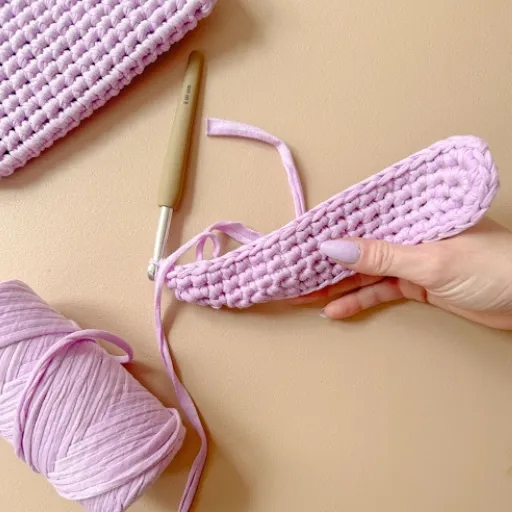
Easy to Care for: Maintenance and Usage
Acrylic yarn is appreciated for its low-maintenance qualities, which are of utmost importance to new and seasoned crafters alike. One of the major advantages is their being machine washable, while also not shrinking or stretching, thus ensuring long-term usefulness. This is why they make products such as blankets, scarves, and sweaters, which are fairly often used and might hence require cleaning regularly.
Acrylic yarn also provides a good option where there is a threat of fading from sunlight. Unlike most natural fibers that tend to fade due to frequent washing and exposure to direct light, acrylic yarns retain their original beautiful colors until the finished project no longer exists. In addition, it dries quickly after washing, making further cleaning and upkeep all the easier; this is especially convenient for large items.
Acrylic yarn is easy to use and maintain, yet one must follow the washing and drying instructions recommended by the manufacturer to ensure longevity. The use of gentle laundry detergents and avoiding the scorching heat of dryers can help maintain the integrity of the yarn and its design. This practicality, coupled with its cheap price tag makes acrylic yarn a household name and a trusted ally in the crafting world.
Colors and Dye Options
The acrylic yarn has often been touted for its brilliant color range and flexibility in dyeing. The yarn is produced by the manufacturers in numerous hues pre-colored so that crafters always get hold of bright and consistent colors suitable for their projects. In some cases, acrylic yarn will even do much better in retaining color compared with many natural yarns; withstanding washing and sunlight exposure that tend to fade colors on others.
Dyeing elements and methods of processing acrylic yarn involve synthetic dyes capable of bonding firmly with the fiber during manufacture. These dyes allow for the production of vivid and intense colors that do not fade quickly ,as some natural alternatives do. Besides, acrylic yarn shows less color bleeding to allow its use in contrasting or multicolored patterns.
For crafters requiring specific shades that are not commonly available, it is possible to hand-dye acrylic yarn but it is more tedious than dyeing natural fibers. Certain dyes developed especially for synthetic materials must be used, since ordinary dyes would not adhere well. The existing complications force most designers to go for the pre-dyed-type acrylic yarn, whose abundance of choices are readily available in the market. Bright hues coupled with consistent quality make acrylic yarn a trusty yarn for all sorts of creations.
Best Projects for Acrylic Yarn
Acrylic yarn, being versatile and cheap, proves to become a favorite in a broad spectrum of handicraft applications. Due to its resistance and softness and because there are many colors to pick from, it is also a favorite material choice of both beginners and experienced crafters. To hire some of the best goes for where acrylic yarn really shines:
- Blankets and Throws: Light weight and washable acrylic yarn provide the best insulation for warm and cozy blankets and throws. Another excellent feature of this yarn would be its suitability for delicate patterns, such as granny squares or ripples. The existence of affordable options makes it legit to undertake large-scale projects like a full-sized afghan.
- Hats and Beanies: Knitted or crocheted, it will pamper the wearer, and acrylic yarn offers some stretch for hats of all ages. Because of its wide array of colors, one can easily go loud or work on some custom designs. Acrylic hats retain their shape and vibrant color long after wear and repeated washes.
- Amigurumi Toys: To create stuffed cute toys and characters, choose acrylic yarn. Bright tones give charms and dolls life, while durability guarantees a working against wear and tear and are freely approved for children’s playtime. Modern crafting blogs say that acrylic-yarn accounts for at least 55% of materials used in amigurumi projects worldwide.
- Scarves and Cowls: An acrylic-wool scarf will provide warmth and comfort, but is not itchy as some natural fibers can be, making it ideal for sensitive skin. Thanks to their resistance to pilling, scarves and cowls will retain a smart look even after heavy use.
- Home Décor Items: Coasters, plant hangers, or cushion covers can benefit from acrylic yarn with their rigidity and structure. Its synthetic nature offers slight resistance against moisture and fading, hence making it a great choice for outdoor décor.
Acrylic yarn comes in thickenesses like worsted, bulky, or DK, allowing possibilities for countless handiwork. Crafters worldwide swear by this flexible and reliable choice, be it for anything requiring tougher fibres, bright colors, or just inexpensive.
Pros and Cons of Wool Yarn
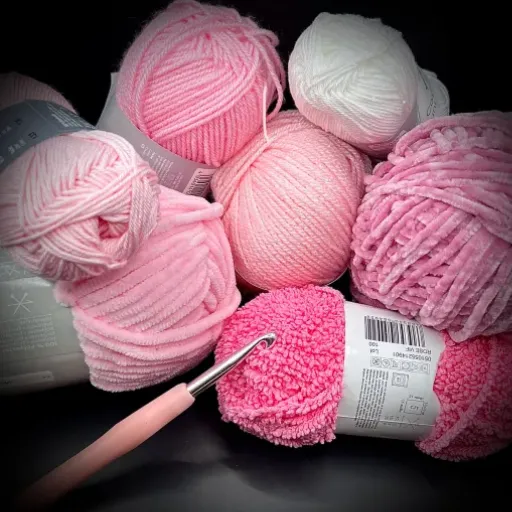
Natural Benefits of Wool Yarn
Wool yarn, an animal fiber, is renewable in nature. Typically, it is obtained from sheep, although goat, rabbit, and alpaca fibers are cultivated for similar use. Wool is best known, however, for its incredible insulating qualities. Due to the presence of a natural crimp, a layer of trapped air is created. This makes it advantageous in the making of warm clothing and accessories that aid the wearer in temperature regulation; it also works in wet and cold conditions.
Key Scientific Fact:
Because of the highly breathable characteristics of wool, it does not allow moisture or sweat to form into humidity that would cause discomfort. According to recent research, wool fiber can absorb up to 30% of its weight in water without feeling wet, thereby making it a distinct choice in apparel to accommodate unpredictable weather.
Moreover, lanolin, a waxy substance found within the fibers, renders wool odor-resistant and anti-microbial. Lanolin inhibits the growth of bacteria and scents, so the woof feels clean even after a long wear. The other significant benefit is sustainability. Wool, being a biodegradable material, starts decomposing within the soil within a couple of years, thereby releasing nutrients that assist in the growth of plants; thus, it can be termed an eco-friendly alternative to synthetic fibers.
Final considerations comprise that wool is flame-resistant, with an ignition point higher than that of synthetic substances. It is, therefore, an excellent choice for bedding, upholstery, and protective clothing because of its disadvantage of self-extinguishing. Along with the above features, these qualities contribute to making wool yarn a luxury and versatile material that is treasured by artisans and manufacturers worldwide.
Temperature Regulation and Comfort
Recognized for its natural temperature regulation, wool serves to provide comfort both in warm and cooler times. This attribute is given by the structure, where it may trap small air pockets. These air pockets act as insulation from the cold in winter, but in summer they also enable the wool to breathe and thus prevent an overheating effect. Thus wool is a very adaptable fiber, able to adjust well to almost any environmental setup and condition.
Another factor contributing to comfort is its ability to fight moisture. The wool keeps the sweat off the skin and, basically speaking, releases it into the air, making sure the wearer stays dry and comfortable. These properties of keep-dry do exist in synthetic material, but any synthetic one would usually start to feel clammy or damp after a while, which is why wool is the fabric to use on activities involving melting temperatures or physical exertion, like hiking or skiing.
The sheer comfort of wool comes largely from its soft feel and slight elasticity. The itchiness initially encountered with early-grade wool is, however, today virtually nonexistent through the modern processing of wool; thus it feels very nice against the skin. In all its applications and uses, from apparel to interior textiles, wool complements functionality and comforts with temperature regulation and water management.
Ideal Uses for Wool in Knitting and Crocheting
Wool is by far the most versatile fiber for knitting and crocheting, as it keeps you warm, is elastic, and durable. Wool is best used to make garments that are intended for cold weather—sweaters, scarves, hats, and mittens. Wool can keep a wearer comfortable by insulating the layers under it, while the stretch gives these items the ability to rebound enough not to distort with time, serving well for fitted garments.
Wool blankets or throws are much appreciated for their fluffy warmth. Highly-valued are the moisture-wicking properties, allowing comfort over a range of conditions. Wool’s mass availability means in different weights and finishes, giving the crafter the chance to develop textures and designs, which may then adorn the home.
For intricate designs like lacework and cabling, wool offers wonderful stitch definition as part of the natural properties of the fiber. This means the various patterns stand out clearly and boost the visual appeal of finished pieces. Whether taken up in very simple projects or intricate pattern, it is the fiber that would never fail a knitter or crocheter and is of good quality, adaptable to sheer number of creative uses.
When to Choose Acrylic vs Wool
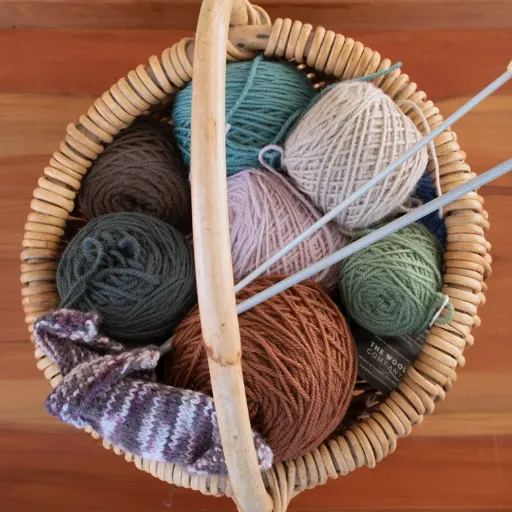
Selecting Yarn for Project Purposes
While choosing between acrylic and wool yarn, the specific ends of a project should be considered. Acrylic yarn is a good choice for projects that call for an economical material with great durability, as well as being easy to maintain. It is best suited for consumer goods such as blankets, children’s clothing, and home décor since it is machine washable and gets better with age-wear resistant. Acrylic yarn also has endless possibilities in colors, with textures assisting artists with bold, complex designs.
Wool yarn is another, natural-ideal alternative to get that rein of natural fibres. Along with fine shape and style distinction and putting on, wool will help to keep you warm while your comfortnesw that is a good set of sweaters, scarves, and hats. Wool is known to glisten with its water-resistant capes, hence going all too good to be really warm in those cold weather conditions. The drawbacks are a little harder maintenance because in most cases wool requires hand washing followed by air drying to preserve its quality.
In the end, aesthetic preference or practicality will weigh in on the choice between acrylic and wool. For easy projects with lots of wear, acrylic will be the better choice. Wool gets that timeless, classy look for heirloom-keeping pieces or that special look for special occasion wear. Thus, consider the intention behind your project, the recipient’s likes and dislikes, and any maintenance instructions to come up with your best choice.
Considering Your Crafting Style and Preferences
Choosing either acrylic or wool yarn needs to take into consideration the crafting style and preference of the individual. Would you prioritize convenience and easy care over texture and tradition? Then, the choice of acrylic would make sense for you. Acrylic yarns come in colors and textures that are useful for beginners and everyday use. It is machine washable, means of comfort, and a good choice when doing a large project or practicing a new technique when one has limited funds.
In contrast, if one considers natural fibers with admiration, he or she must be ready to weigh the warm and rich feelings bestowed upon a material like wool. Wool is insulating and breathable; moreover, this material provides a touch of luxury that acrylic fiber cannot simply impart. It requires more maintenance and is expensive, yet the durability and style options it gives remain worthy of consideration for heirloom-quality projects or plinth crafts, whereas pure acrylic fits into others perfectly. It is all the more appreciable for things like winter wear, wherein insulation is its best quality.
So at the end of the day, it depends on your priorities while crafting. Consider the occasion for which this is set, the requirements of the person whom it is meant for, and how much care you are ready to give to keep the result up. Both acrylic and wool have charming points, and choosing the one that will be right for you will make both an enjoyable experience and a finished product worthy of your pride.
Final Thoughts on Yarn Selection
When choosing yarn, the most important consideration is to focus on the reason for your project. If you want items like winter clothing or blankets that should keep warmth and durability, then wool is your option, as it is insulating, elastic, and breathable. Another feature of wool is that it is biodegradable and retains its shape with time, making it a sustainable choice for long-term use. In contrast, wool needs special care in washing and drying to maintain quality.
Keeping this in mind are acrylic yarns that are faint, nearly always available, and cheap. Thus, it would very importantly attract beginners or one with something not made for heavy use. An acrylic wash is easy, shrink-resistant, and comes in numerous colors and textures, giving you much room to play with in your design. However, it is not that much breathable and might not impart a lot of warmth when compared to a natural fiber like wool, which should be a consideration in some projects.
And finally, which yarn works best for you depends on how you balance your needs, including durability, price, ease of maintenance, and aesthetic. And perhaps be all the more sure by testing a small swatch of the yarn for a large project. By weighing all these factors and tailoring the choice to your needs in the context of a very particular crafting purpose, you can produce a work that stands tall in both utility and beauty.
Frequently Asked Questions (FAQ)
Q: What are the main differences between wool yarn and acrylic?
A: The main difference between wool and acrylic lies in their fibers. Wool comes from sheep and is a natural fiber, while acrylic is synthetic and made from petroleum products. Wool is famous for its warmth, elasticity, and moisture-wicking ability; hence, it is comfortable. On the other hand, acrylic yarns can be lighter and softer than wool, and are often less expensive, although sometimes they may not be as breathable as wool.
Q: Can somebody allergic to wool use acrylic yarn?
A: Yes, someone allergic to wool can use acrylic yarn without any danger. Since acrylics are synthetic and contain no proteins that can induce an allergy in wool, acrylic is considered suitable for anybody wishing to enjoy crocheting and knitting without discomfort.
Q: Is merino wool better than acrylic for knitting projects?
A: Merino wool is mostly regarded as better for knitting because it is soft, warm, and supports its wearer with temperature regulation. Whereas acrylic is not breathable, natural merino wool usually breathes and wicks away moisture-making it excellent for wool socks and knitted wool items. However, depending on the need of the project, good-quality acrylic yarn could be a great option.
Q: How does washing machine care differ for wool and acrylic yarn?
A: Acrylics are generally more durable and can withstand machine washing, thus making it easier to care for. Wool, especially pure wool, might require additional delicate handling to prevent any felting or shrinkage. Knowing the care instructions for any particular type of yarn will always help to enhance the yarn’s longevity.
Q: For which types of projects would you rather use wool versus acrylic yarn?
A: Wool is great when warmth and durability for a given job are needed: hence the making of sweaters and hats and blankets. Acrylic, meanwhile, is used mostly for items such as children’s toys or beginner projects since usually, it is less expensive and offered in a million colors. Choice is usually either on personal preference or in consideration to the desired properties of the finished item.
Q: Can feel differentiate wool from acrylic?
A: Generally, you can tell the difference between wool and acrylic by feel. Wool fibers tend to be more textured and may feel coarse, whereas the good-quality acrylic is usually smooth and soft. Furthermore, wool stretches and recovers naturally, whereas acrylic is often more rigid.
Q: What are the benefits of using an acrylic blend yarn?
A: Acrylic blend yarns combine the benefits that can be obtained from acrylic with those offered by any other fibers such as wool or cotton, thus providing an option that can be used for various projects. Working in acrylic blends improves characteristics like softness, durability, and warmth, making it suitable for a very wide range of knitting and crocheting projects.
Q: Are acrylic socks as warm as wool socks?
A: Acrylic socks do keep feet warm, yet this could be slightly less than in the case of wool socks. Wool repels cold with its natural insulating ability of keeping warm feet, while the acrylic socks are pretty lightweight and warm but do not have an ability to keep heat as well as wool does. Knitters generally feel that wool or wool blend yarns provide the utmost warmth when making socks.
References
- Mary Maxim Blog: Acrylic Yarn vs Wool: Which is Better? – Discusses affordability, quality, and other key differences between wool and acrylic yarns.
- Quora Discussion: What is the difference in appearance between wool, acrylic, and cotton yarns? – Highlights the visual and textural differences between wool and acrylic yarns.
- Textile Yarn Blog: Wool Acrylic Blend Yarn: The Perfect Choice For Knitters And … – Explores the properties of wool and acrylic, including warmth, elasticity, and moisture-wicking capabilities.








